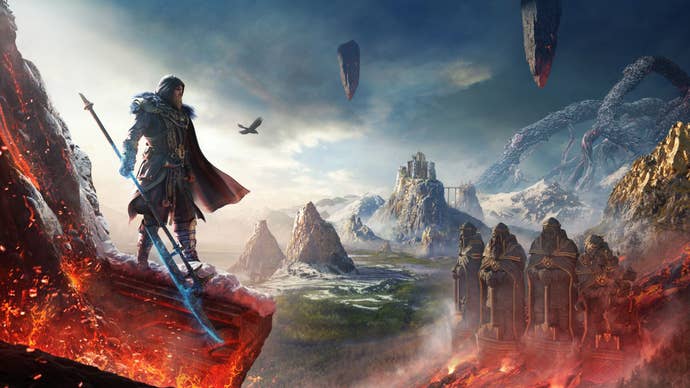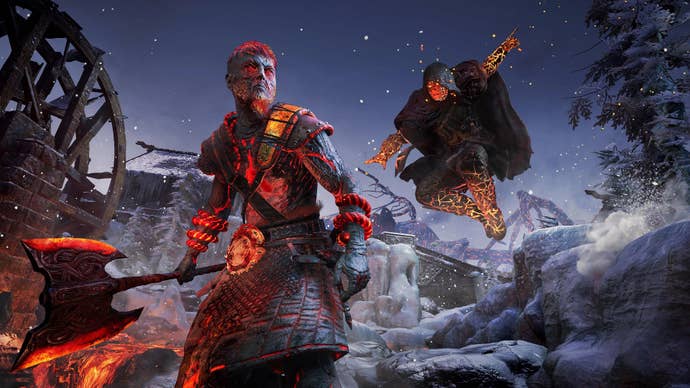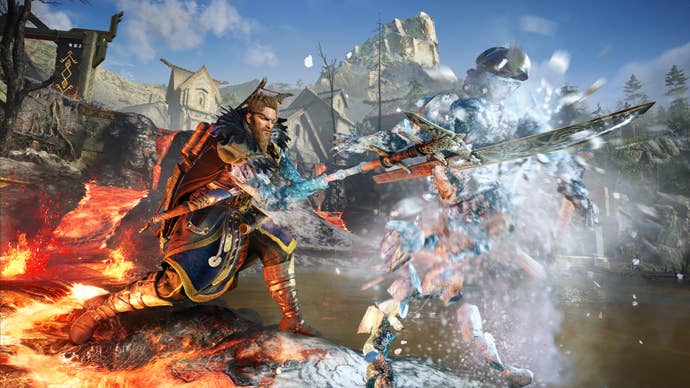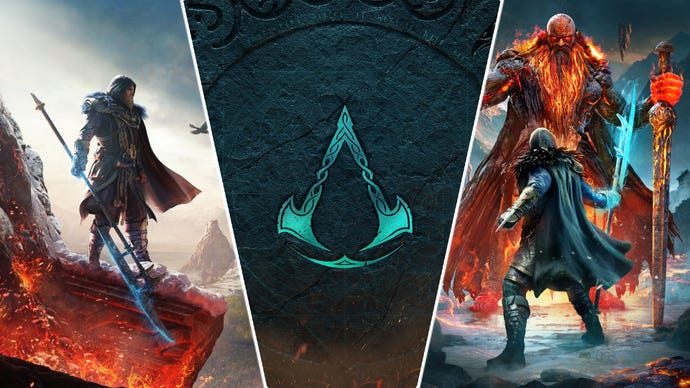Dawn of Ragnarok is still more Assassin's Creed than God of War, but mythology buffs will be in Valhalla
With Assassin’s Creed Valhalla expansion, Dawn of Ragnarok, Ubisoft is cementing itself in mythology instead of history. But does it pay off?
Mythology in the media is having a moment, isn’t it? Whether it’s in the form of the prestigious God of War reboot on PlayStation, the god-like indie darling that is Hades, or the experimental historical-mythological hybrid that is the modern Assassin’s Creed platter, you can’t move for interpretations of deities and demons in pop culture. Even outside of gaming, you’ve got Marvel running amok with its Norse-inspired heroes, and the way that The Witcher draws on European and Scandinavian myths isn’t exactly subtle, either.
You’d think we’d be reaching a point of saturation, then – that one more interpretation of Thor, or Odin, or Loki would make your eyes roll. And yet, people can’t stop gobbling it up. Assassin's Creed Valhalla had the biggest release week in franchise history after its marketing campaign promised Viking raids and mystical intervention. God Of War Ragnarok is firmly planted at the top of many people’s ‘most wanted’ games lists (if they’ve been low-key mischievous enough to secure themselves a PS5).
But what is it about these stories that have kept us – centuries removed from when they were first told – coming back for more?
“Viking and Norse mythology is monumental,” says creative director Mikhail Lozanov of developer Ubisoft Sophia. “It’s out of proportion, every saga you read. It’s mind-bending. When you create something drawing from myths like this, you end up with [stories that get into your head]. It’s why I’ve been doing this for more than 22 years – every time you do something like this, you learn about new technologies, new people, new cultures, new time periods, new scientific achievements. And when you learn these things, you have so many more tools with which to tell your own tales.”
And that shows in how the team at Ubisoft Sophia has approached Dawn of Ragnarok, the next expansion for Valhalla. where God of War is dialing down into a more brutal fantasy about a man (or god) learning to understand and accept his son, Valhalla’s planned foray into Ragnarok is different – coming at this sprawling mythological world from the polar opposite direction by following the perspective of Odin, who’s searching for his missing son, Baldur. Both driven by paternal love, but from different angles. Different interpretations.
“One thing that inspired us when researching Odin and the sagas that surround him,” says creative director Mikhail Lozanov of developer Ubisoft Sophia, “is a story about what happens when people pass away. If you’re watching the aurora borealis – the Northern Lights – and it changes to white or turquoise, it is showing you the soul of someone who has passed away.”

Lozanov was told this element of old Norse mythology on a research trip the team took to Scandinavia, and the factoid has stuck in his head ever since. Representing that in-game (with respect) has been a core tenet of the studio’s design philosophy when making Dawn of Ragnarok.
“Whenever we create something in Assassin’s Creed, we want to make something that is grounded,” says Lozanov. “This time, the game is not grounded in history, but in mythology – and that’s equally as important to us because, for people in the 9th Century, their mythologies and their beliefs inform history and events that happen. The daily lives of these people are informed by these tales. In order to create something that respects these cultures, these beliefs, we have to represent this well. I feel we present a documented mythological fantasy which is grounded in the beliefs of the people.”
And this reverence for the source material affects the gameplay, too. “In the sagas, we read that Odin was a shapeshifter, so that inspired how we approached stealth in Dawn of Ragnarok,” explains Lozanov. “There are a number of sagas that show us how Odin transforms into a raven, or an eagle – and that fits so well with the game itself.”

In a gameplay demo we see for the expansion, Odin knits together some of that now-standard Assassin’s Creed light/heavy combat together with a transformation that sees him flit to the skies above, circle around as a raven, than transform back into his humanoid avatar to bring some classic death-from-above assassination. Narratively and mechanically, Ubisoft Sophia is trying to harness Odin’s nuance.
“Odin, as a character that we know from across all the sagas, is a very diverse character,” says creative director Mikhail Lozanov of developer Ubisoft Sophia. “Across the spectrum of all the stories we see him in, he is very different – comes across in different ways. The story of Odin that players will experience in Dawn of Ragnarok is a very human one; yes, you play as a god, but a very relatable one. We strongly believe that you will have as much of a relationship with Odin [as you did with Eivor]. At points, it’s deeply emotional, and we’re very proud of what we’ve created.”
But that’s not to say that the game is going to be as rooted in reality as Valhalla, Origins or even Odyssey – no, straying away historically-accurate locations gives Ubisoft Sophia the chance to do something fun with the expansion’s setting of Svartalfheim, the land of the Dwarves.

“The theme is ‘surrealism’,” Losanov explains when we ask if there’s anything in particular he’s proud of when it comes to this new land. “There are certain things, as humans, we expect from the laws of physics. [The art team] has played with that, and there are certain areas in the expansion that are [going to challenge] how you perceive them.” If it’s anything like the ‘new weird’ we got to see in Control, you can colour me interested.
Between a new area to explore, and a new take on Odin ripped right out of the annals of mythology, the expansion offers “over 35 hours of content”. So if you’re one of the many players that starts to fall off Assassin’s Creed games after 50+ hours (after having completed about six story missions in that time), this more streamlined experience may be refreshing for you. Lozanov notes that the game “stays true” to the open world ethos recent Assassin’s Creed games, but – from my perspective – it’s all just crunched down a bit. And that’s probably for the best.
As Assassin’s Creed moves towards a future built around whatever the hell Infinity ends up being, it’s nice to see the developers cut loose and experiment a bit more with this concrete-rooted formula, and give us another take the gods and goddesses of old that aren’t all dressed up in that cinematic, over-the-shoulder PlayStation gimmick we’ve seen dozens of times before.


